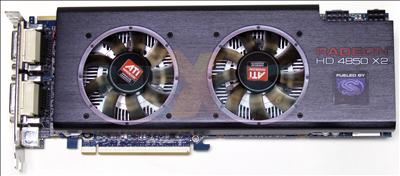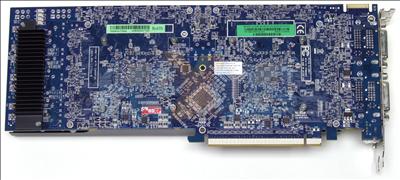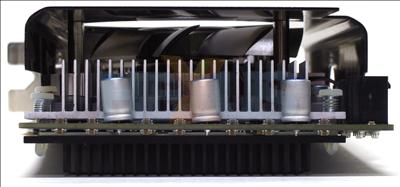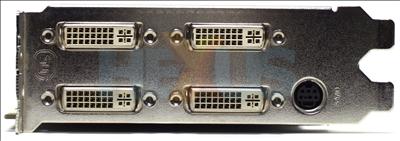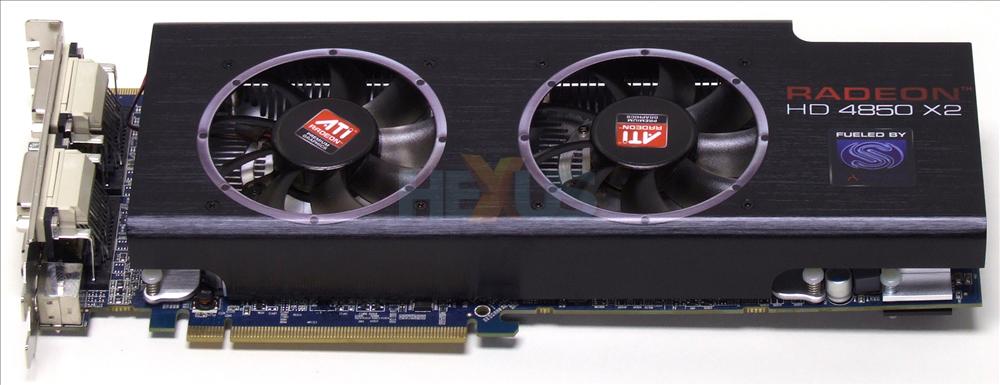
Nearly three months ago, AMD laid claim to the world's fastest mainstream single-board graphics card with its
Radeon HD 4870 X2 - a benchmark-pummelling solution that takes two Radeon HD 4870 GPUs and slaps them together on one board with the aid of built-in CrossFire.
NVIDIA, knocked convincingly off its perch, hasn't yet conjured up a means to reclaim its lost crown and has instead opted to focus on tapping into its GPUs' parallel processing power. The result, says NVIDIA, is a series of GPGPU (general-purpose computing on graphics processing unit) solutions that do more than just push 3D framerates, and the likes of Adobe are already taking advantage.
Despite NVIDIA's branching out, there's no denying that the single-card performance crown is the most coveted trophy in the increasingly-competitive GPU market. With AMD having made the crown its own, it then promised a Radeon HD 4850 X2 and claimed it could push NVIDIA's current line-topping GeForce GTX 280 down to third place.
The Radeon HD 4850 X2 - which, if you hadn't guessed, is two Radeon HD 4850 GPUs on a single board - has arrived courtesy of Sapphire, whose board is the first - and currently only - 4850 X2 in production. So, let's take a closer look and see if it really is the world's second fastest mainstream single-board graphics card.
The Radeon HD 4850 X2 had been rumoured to be on its way ever since the performance-leading Radeon HD 4870 X2 made its debut on August 12th.
Oddly enough, now that it's here, there's just one card to choose from and it comes from Sapphire. According to the Hong Kong-based manufacturer, other AMD partners will join in sooner or later but Sapphire is the first to complete its design and get it into production.
As you'd expect from a dual-GPU solution, it isn't small. The Sapphire Radeon HD 4850 X2 measures in at about the same size as a Radeon HD 4870 X2 or a GeForce GTX 280, and it's hungry enough to require both 8-pin and 6-pin PCIe power connectors.
Steering clear of the reference one-fan cooler found on AMD's Radeon HD 4870 X2, Sapphire has instead opted for a dual-fan solution that has its pros and cons. Temperatures - which we'll come across later - are very cool, but the fans are noisy when the card is idle or under load.
Also worth noting that despite being a dual-slot card, the cooling system doesn't vent heat through the rear of a users' chassis, and you'll see why shortly.
Over to the back, and you'll see both RV770 Pro GPUs and a single CrossFire connector that'll allow users to tie-in another board for a possible four-way CrossFireX setup.
Hello! Here's something you don't see everyday - four dual-link DVI outputs, all of which are HDCP compliant, and a TV-out. That back panel explains the lack of a rear-end-venting cooler, but it brings other benefits to the table. It'll allow for three-or-four display multi-monitor setups from a single board, and that could come in handy for a workstation user, we feel.
Users looking to power displays via HDMI adaptors will hit a minor snag, though. All four DVI ports can be equipped with an HDMI adaptor, but only two will be able to output audio.
Summary
Unsurprisingly, the card is two Radeon HD 4850 1GB cards on a single PCB, and the duplication is so precise that even the DVI outputs have been X2'd. The usual video-related goodies are present, including ATI's AVIVO HD and hardware-accelerated video thanks to the Unified Video Decoder 2 (UVD 2).
As a side note, and a personal pet peeve, it's worth mentioning that the Radeon HD 4850 X2 highlights an obvious flaw in AMD's chosen nomenclature. The average consumer may believe that a higher number indicates a better product, and that's often the case. Joe Bloggs, then, might assume that a Radeon HD 4870 is superior to a Radeon HD 4850 X2 - and that simply isn't so.


